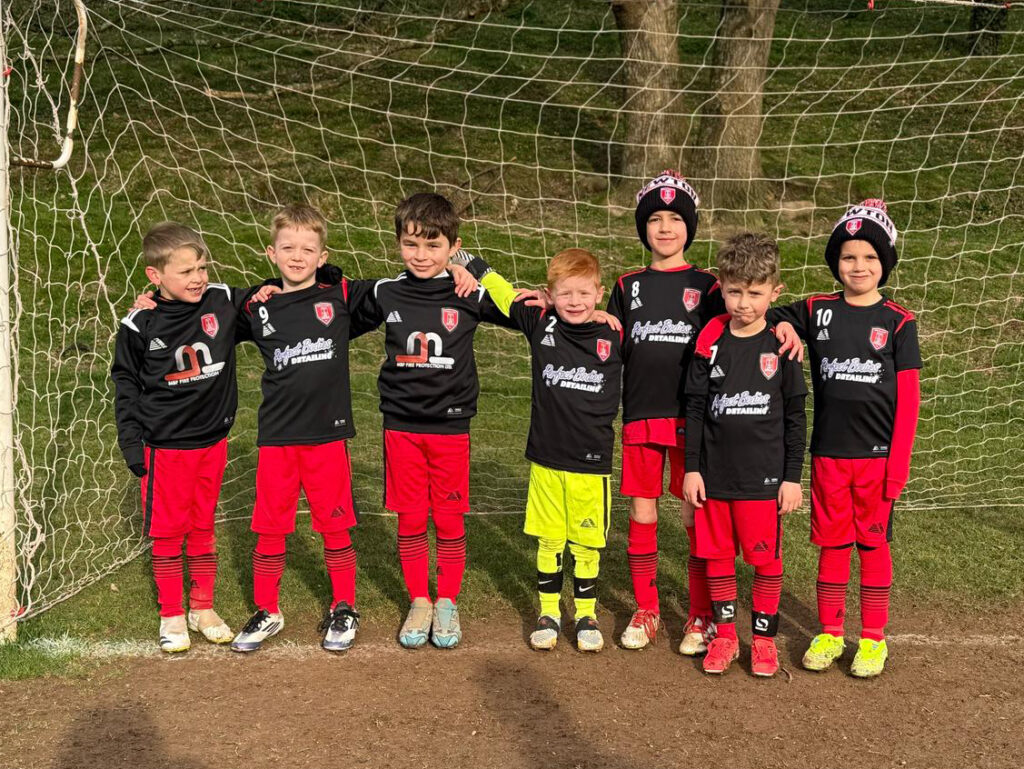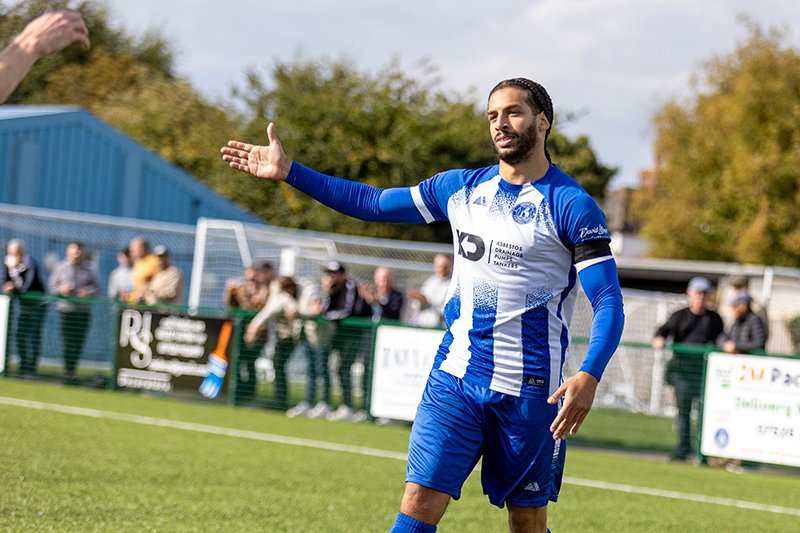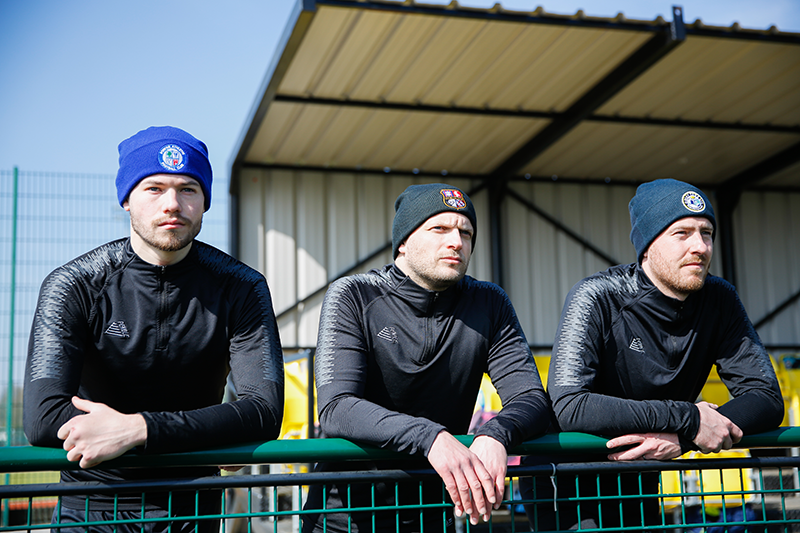Last Updated on: 3rd October 2025, 03:28 pm
Football faces plenty of challenges as the weather turns colder. You might have to contend with frozen pitches, ice, and cold winds. At this time of year, staying warm is really important, so layering up is a must. Read our guide to find out why it’ll make such a difference to your team.

How the cold affects your body
When dealing with cold temperatures, the body tries to regulate itself. This includes adopting specific mechanisms, such as shivering, to keep warm. Playing football in cold weather can cause problems like:
- Rigid muscles and slower movement
- Less energy
- Reduced focus
So, you could find it harder to perform at your best in cold weather. We’ll examine the reasons below.
Muscles
In cold weather, there’s also a fight over blood supply. Active muscles need more oxygen, but your body is moving blood away from the skin to protect the body’s core. Poorly oxygenated muscles become rigid. This reduces explosiveness and makes them less efficient.
Colder muscles are also more likely to tear, so tears and strains are more common in cooler weather. So it’s important you don’t let your muscles get cold. Remember to keep active at halftime or whenever you’ve got a break from activity. This will keep the muscle temperature up before you get back on the pitch.
Energy
In cold weather, you’ll find that you need more energy. This is because your body is expending more energy to maintain its core temperature, warm inhaled air, and fuel muscles. Your body will start processes to help regulate core temperature, including shivering and non-shivering thermogenesis. Both of these processes use a lot of energy. This is on top of the additional energy needed to play. Wearing layers will keep your body warmer, so it doesn’t need to work as hard to maintain its temperature.
Focus
Any temperature change can affect your focus. This is because your brain’s resources are being diverted to maintain core temperature. That means resources are taken away from processes like focus and memory. Depending on how cold it is, you might also be physically uncomfortable. This will distract you further and impact your concentration. So, cold temperatures can make it harder to keep your attention on the game. You might end up less alert and make more mistakes on the pitch. It might also take you longer to make decisions.
Hydration
Hydration is also disrupted by the cold. You might think that the cold weather makes it easier to avoid dehydration, but you’re still at risk. Water loss from sweat is reduced, but you’ll lose more water from breathing. You’ll also find that your body’s natural thirst decreases in the cold, which means you’re less likely to drink enough water. Make sure you drink enough water to replace anything lost during exercise, plus additional water to help regulate your body.
The Science of Layering
As we’ve seen, staying warm is the key to performing at your best in the cold. So, dressing properly could make all the difference. Whether you’re heading to training or a match, make sure you have the appropriate clothing for the weather. In winter, that means layers.
For football, you’ll want layers that trap heat while still allowing moisture to escape. Try to follow the rule of three when layering. Each layer plays a different role in keeping you warm.
- Base layer: This should be a lightweight polyester layer made from moisture wicking fabric to keep you dry.
- Mid layer: Think polyester fleece to provide insulation without restricting movement. Think training tops or hoodies.
- Outer layer: A layer to protect against wind, rain, and freezing temperatures. Jackets and coats keep the elements out so the inner layers can do their job.
The benefit of layering is flexibility. You can remove or add layers as your body temperature changes. For example, you’ll probably wear your outer layer to training but then remove it when it’s time to get going.
Cover Your Extremities
Your feet, head, and hands are all vulnerable to the cold. So, make sure they’re covered by insulating fabrics. Keeping them warm will help maintain blood flow. That means your body will maintain the transport of oxygen to your active muscles. Wear a hat, snood, and gloves on your way to training and then remove them once your body starts to warm up.
Practical Tips for Training in the Cold
In winter, it’s more important than ever to plan ahead. Make sure that you always have everything that you could need. Fill your kit bag with extra layers, so there’s no danger of you getting cold. When heading to training or a match, it’s important to:
- Arrive layered up: All players should wear their layers from the start so they don’t cool down before the session begins.
- Dynamic warm-ups: Use shorter, sharper warm-ups to get blood flowing quickly without standing still for too long. Check out our guide to a comprehensive warm-up.
- Stay dry: Always have a change of clothing to swap into.
- Top up on carbs: You might need to compensate for the extra energy used in the cold.
These small adjustments keep sessions enjoyable and reduce the risk of injury when the weather turns cold.
We have even more practical tips in our Winter Training Tips blog.
Pendle Cold Weather Gear
At Pendle, we know how important it is to keep players ready for action, no matter the conditions. That’s why our range of cold-weather training wear is built for grassroots football. Kit out your team without breaking the budget with our unbeatable package deals.
Base Layer
Remember, you want moisture wicking layers that draw sweat away from your skin. Something like our:
- Football base layers – Available in 14 colours to match your kit, they stop you getting cold by wicking sweat away from your body.
- Base layer bottoms – Available in black. Wear these bottoms under your shorts for an extra layer.
- Braga training tops – Made from moisture wicking fabric and also acts as a compression layer.
Mid Layers
We have some great options you can slip on in the cold.
- Atlanta 2.0 ¼ zip – This fleece-lined training top is perfect as a second layer.
- Braga high-neck sweatshirt – Also fleece-lined, but the high neck can be worn over the face for extra protection.
- Atlanta 2.0 sweatshirt or hoodie – These are stretchable and fleece-lined layers.

Outer Layer
This needs to protect you from the weather, so grab one of our jackets.
- Braga waterproof jacket – This lightweight, fully waterproof jacket is perfect for slipping over your training kit.
- Inter rain jacket – Made from waterproof material, this has the added benefit of a fleece lining to keep you warm.
- Braga winter training jacket – A great winter jacket that combines padding and fleece backing for warmth.
- Gilet – Made from waterproof material, this is padded and has a fleece side panel.
Accessories
Always remember to keep your head, neck, and hands warm. We’ve got plenty of cold-weather accessories like:
Keepers
Goalkeepers will have moments of explosive movement followed by stationary periods. This makes them vulnerable to injury in the cold. As well as keeping as active as possible to keep muscles warm, grab a pair of long goalkeeper bottoms for extra protection.
Subs
Your subs will cool off quickly sitting on the bench. Their muscles will get cold and then be at greater risk of injury when they get on the pitch. Not only should they be warming up more regularly than usual, but they should be wearing plenty of layers.
- Vulcan thermal jacket – A heavyweight jacket with a quilted lining will keep subs warm on the bench.
- Braga winter tracksuit top – This tracksuit has a fleece lining to keep your subs warm on the bench.
- Braga winter tracksuit bottoms – Don’t forget a pair of fleece-lined tracksuit bottoms.
Get Prepared
Football doesn’t stop when the temperature drops, and neither should your team. Your players stay warm, safe, and ready to perform when they layer up appropriately. Grab some winter training wear essentials and they’ll be prepared for whatever the season throws at them.
Browse our full range of Pendle training wear and keep your team match-ready all season long.
Tags: cold weather training, Football training, football training kit, football training wear, winter football training

